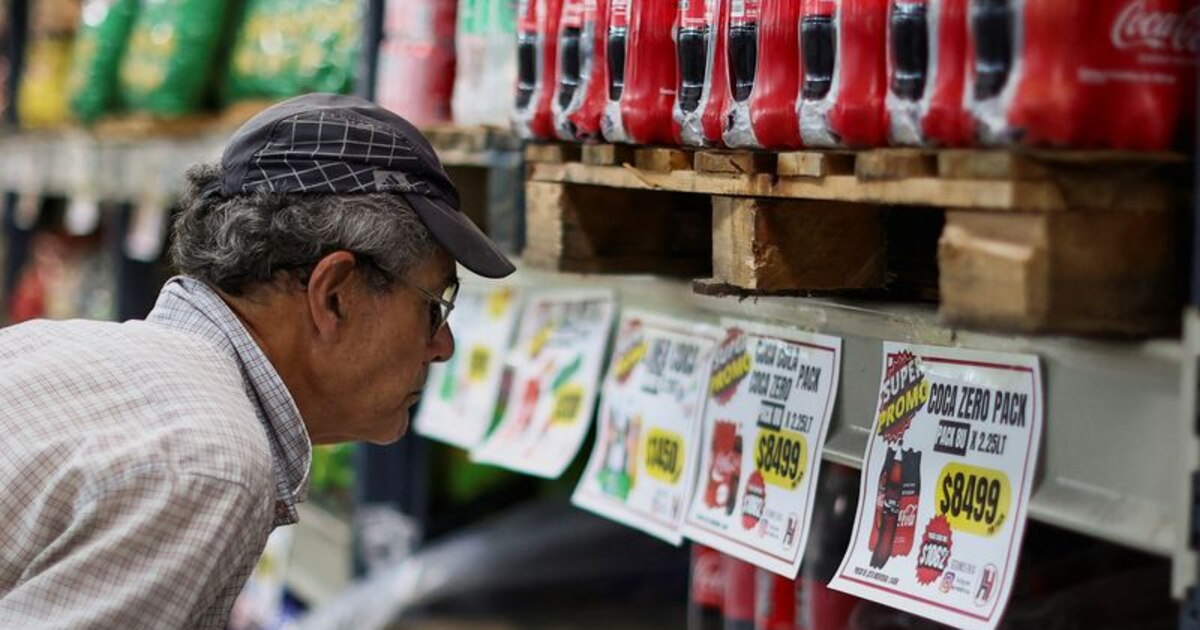All the Answers
Well-known member
Reactivation with price increases: the economic trap that is causing inflation to fail to break through 4% per month - Infobae

Source:

Reactivación con suba de precios: la trampa económica por la que la inflación no logra perforar 4% mensual
Además del impacto del ajuste de tarifas, la incipiente recuperación a través de la mejora real de los salarios y la expansión del crédito no es compatible con una caída más acelerada del IPC
September 12, 2024
In addition to the impact of the tariff adjustment, the incipient recovery through the real improvement of wages and the expansion of credit is not compatible with a more accelerated fall in the CPI.
By Virginia Porcella

File photo. REUTERS/Agustin Marcarian
At the very least, the inflation figure for August was “annoying” . It is a marginal variation, which consolidates the rise in prices around 4% per month, but which sets off alarm bells not so much because of the general CPI, but because the core inflation, that is, the rise in the set of prices of goods and services that are not subject to regulation and do not belong to the seasonal category, interrupted its downward trend to advance 4 tenths.
Behind this somewhat unexpected result – the expectation was that for the first time this year the index would be below 4% and become the lowest of the year – many analysts are warning of the weight of the correction of delayed prices, including the impact of the increase in transport in the City of Buenos Aires and the strong increase in electricity (21%) in the northwest of the country, while “non-lag” prices are recording more moderate increases, even converging to the 2% rate of increase of the official dollar.

Other analysts, however, have a broader picture: economic recovery is antagonistic to an accelerated decline in inflation. In any case, it is compatible with a more gradual decline, as seems to have been suggested since May. For four months, inflation has not managed to break through 4%, something that, both the Government and private analysts warn, will surely occur in September as a result of an additional stimulus such as the reduction of the PAIS tax.
“The economy has been remonetizing for several months via credit channels and this is allowing activity to recover. In this context, many non-tradable sectors whose prices had been lagging behind are beginning to recover lost ground. This, in part, explains the resistance,” explained economist Gabriel Caamaño , director of the Ledesma consultancy.
In this regard, the analyst considered that if the objective is to reactivate the economy through the recovery of real wages and credit, “you probably have to accept that the inflationary slowdown is more gradual.” On the other hand, for a more pronounced decline, the Government should be willing to tolerate a slower and less significant recovery. Both things do not go together.
“Both at the same time is a fat pig that weighs little, even with an exchange rate anchor and real appreciation,” Caamaño explained.

The truth is that inertia is difficult to break. Not only did public services increase, but the main index category, food and beverages, also registered a level of 3.6%, lower than the general level but which denotes persistent pressure.
“Towards the middle of the month, there were some food items that rose a little more, especially meat, baked goods, oils and some drinks. Afterwards it moderated but that weighed, particularly on core inflation, the general level was greatly influenced by the rise in public services,” said Camilo Tiscornia , from C&T Consultores. Like most economic actors, the “tax shock” due to the reduction of the PAIS tax will make “September come somewhat better” and, in that case, break through the 4% monthly floor. It won’t be for long, anyway, since the economic team itself foresees an impact of just half a point, that is, the index for this month would be 3.5 percent. That is, that statement by the Minister of Economy, Luis Caputo , according to which the inflation figure would start with 1 in September was completely buried, even for the following months,
“The issue is not the decimal, but the recomposition of relative prices. Those lagging behind are those that push the general data up and those ahead are already growing at the rate of crawl (monthly rise in the dollar),” said economist Leonardo Chialva , of Delphos Investments, in a post on X, which he accompanied with a graph in which the increases in public transport are cut by 18% and in rent, housing and related expenses by 10% versus the increases in clothing or cars, which rose at a rate of 2% last month.

